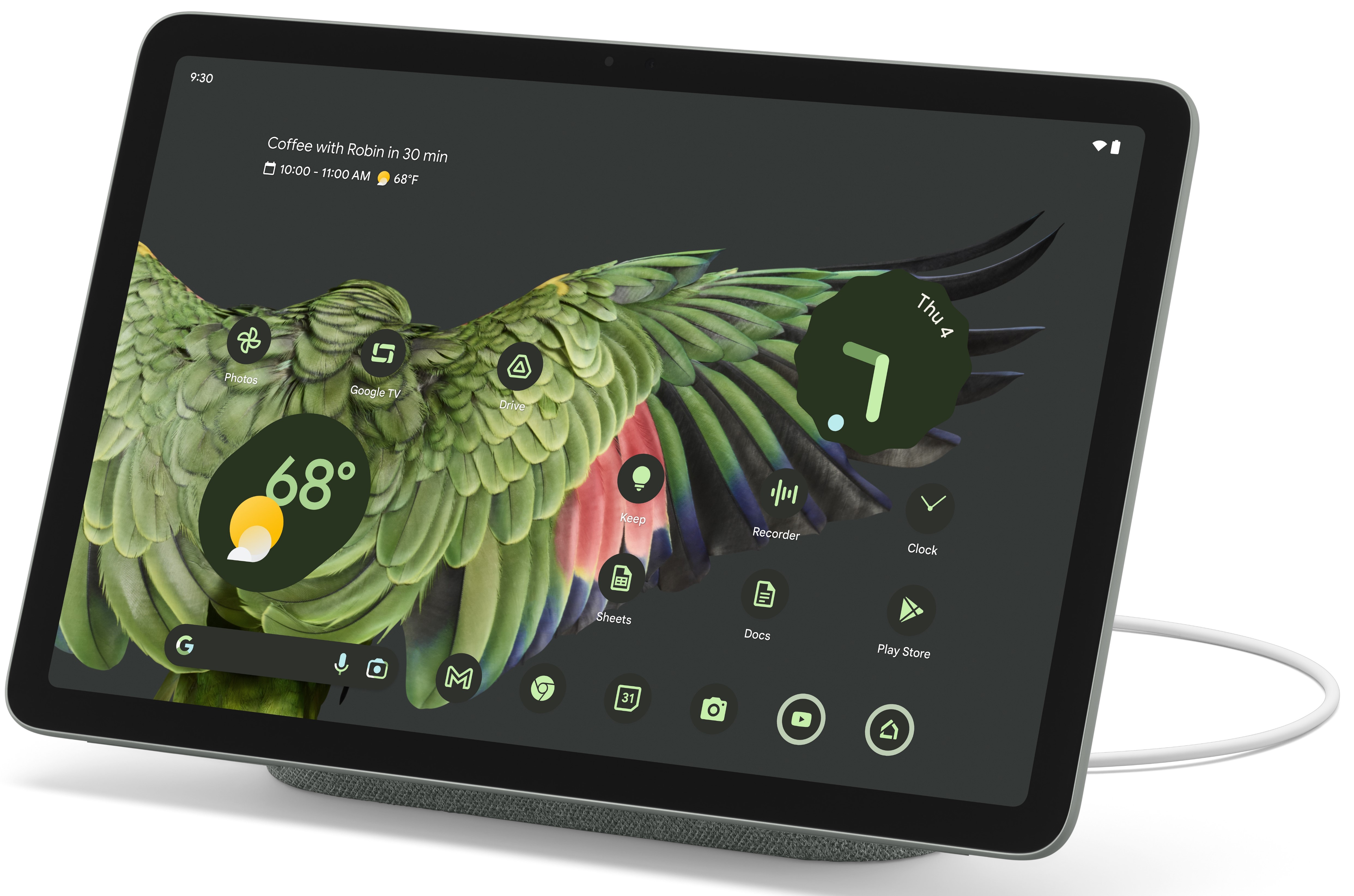
by Larry Magid
This post first appeared in the Mercury News
I was in the room in 2010 when Steve Jobs introduced the Apple iPad, and ever since then, Apple has pretty much dominated the tablet market. There has been competition from the likes of Samsung, Lenovo and Amazon, but Apple has 55% of the U.S. tablet market, followed by Samsung (19%), Amazon (11%), unknown vendors (13%) and Google at a far distant 0.52%, according to Statcounter. Globally, Google’s market share is even closer to zero.
Google has made some attempts at tablets going back to 2012, but as you can tell from that dismal market share, consumers haven’t exactly flocked to the brand.
That could change now that Google has released its Pixel Tablet. I don’t expect it to take a big bite out of Apple, but I do think it’s a worthy contender, especially for the millions of people in the U.S. and other countries who use Android phones. Although there are plenty of people who use an Android phone and Apple iPad tablet, there are some advantages to sticking with one platform, including ease of use and integrated services across devices.
It’s a bit hard to compare the Pixel Tablet with iPad because Apple has many models in different sizes and configurations, while Google has only one model. But, in terms of price, the $499 11-inch Pixel Tablet is somewhat comparable with the $599 iPad Air 5th generation or the $449 10th generation 11-inch iPad. All are roughly the same size and weight (about 1 pound) and somewhere in the neighborhood of about 10 inches wide, 7 inches tall and .3 inch thick. The display resolution is also comparable. The $499 Pixel Tablet comes with 128 GB storage. $599 buys you one with 256 GB.
The tablet has an aluminum shell with a nice finish that feels more like ceramic than plastic. The 2,560 by 1,600 pixel display looks great when watching video and reading. The 500 nit bright display is suitable for outdoor use, although the screen will reflect light if it’s in direct sunlight.
As always, the biggest differences between Apple and Android products are operating systems and apps. While iOS and Android are similar, there are subtle differences that people often care about. But the easiest operating system is always the one you’re used to. As per apps, there are some that are available for iOS that aren’t on Android, but most popular apps are on both platforms, and there is almost always an Android equivalent in the relatively rare cases where a developer only offers an iOS app.
No keyboard case but a great speaker dock
For those who care, the bad news about the Pixel Tablet is that Google doesn’t offer a keyboard case as does Apple. It will work with just about any Bluetooth keyboard, and I expect that there will soon be third-party keyboard cases for the Pixel. Google does have an overpriced $79 protective case with a kickstand (handy for hands-free watching) but there are already some less expensive third-party cases.
The good news, however, is that Google bundles a speaker dock with the tablet that doubles as a charging stand and a speaker with far better audio than the tablet’s built-in speakers. Unlike the four speakers on the sides of the tablet, the base speaker isn’t stereo, but it sounds great. In addition to the stand, you can charge the tablet with a USB cable. That’s important if you travel with the tablet or use it in other rooms of your home.
Google claims up to 12 hours of video streaming. I don’t have a lab to test battery strength, but PC Mag clocked it at 5 hours and 25 minutes, compared to the iPad’s 5 hours and 59 minutes.
Attaching the tablet to the dock is very easy thanks to magnets that let is snap in place. Once mounted on the stand, the tablet becomes a smart display, kind of like the Nest Hub. Just say “hey Google” followed by a question or a request such as “play Bob Dylan,” “what’s the weather in Las Vegas” or “show me a picture of a kangaroo.” It also supports multiroom audio. If you have other Google speakers or displays, you can listen to the same music throughout your home. It does, however, have a different interface and lacks some of the Nest hub features. While it will show recipe results from a Google search, it won’t display them directly as does the hub. And it doesn’t have the sleep sensors that are built into some of the newer Nest hubs.
The dock needs to be plugged into a power outlet, but as I wrote last week, there are plenty of battery-operated speakers that work well with the Pixel Tablet. I watched a movie in my backyard and enjoyed rich audio by pairing the tablet with my Sony SRS-XB13 Wireless Speaker.
The Pixel Tablet also has the ability to view two apps at once either side by side in landscape mode or one on top of the other in portrait mode.
Despite the ability to use an external Bluetooth keyboard, the current lack of a keyboard case makes it a tough sell for productivity applications, but as a media consumption device, it’s top notch.
The tablet is a bit pricey, especially compared with affordable Amazon Fire Tablets and some of Lenovo’s less expensive options, starting at under $100, and it’s definitely not priced to compete with standalone smart displays like Google’s Nest Hub or Amazon’s Echo Show. But as a hybrid tablet/display, it makes a great deal of sense, especially if you want the convenience and rich sound you can achieve with the bundled dock.
Disclosure: Larry Magid is CEO of ConnectSafely.org, a nonprofit internet safety organization that receives financial support from both Google and Facebook.